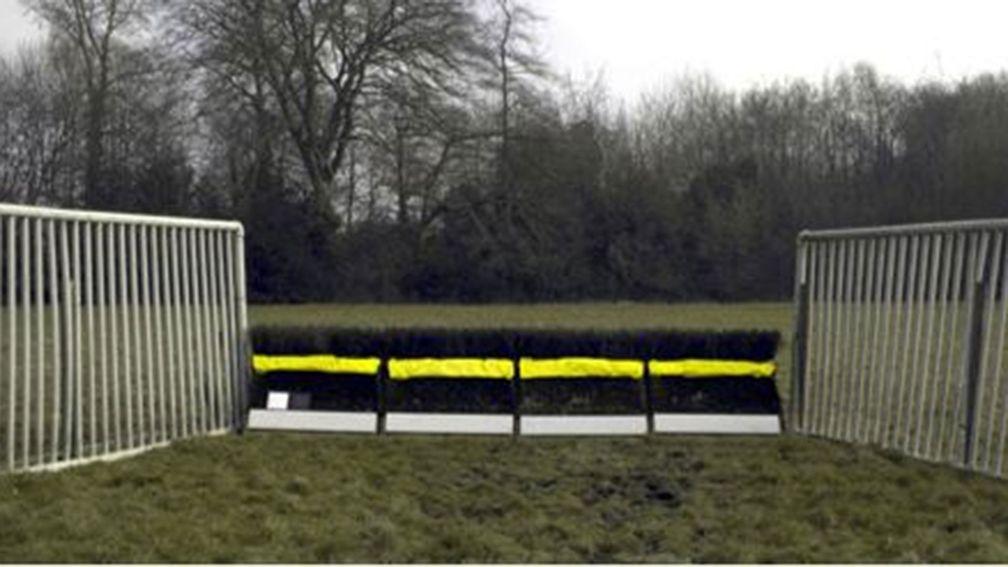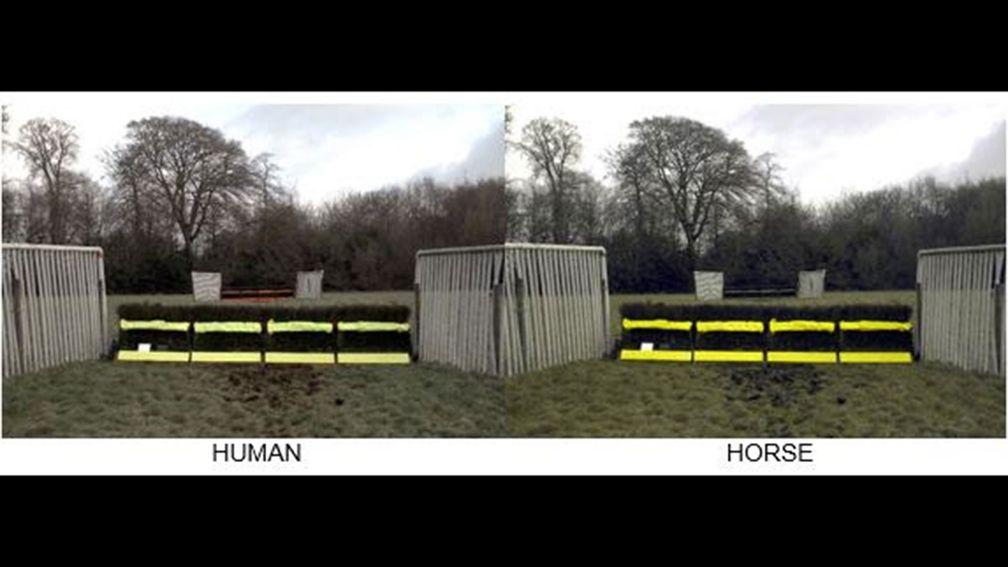Yellow is the new orange: obstacles could be altered to aid equine vision

Hurdles and fences on British racecourses could be set for a colour change, following extensive research by the University of Exeter in a bid to improve equine and jockey safety.
A study commissioned last year by the BHA found horses respond better to obstacles coloured fluorescent yellow and white, rather than the orange currently used to indicate hurdles and fences and takeoff boards.
While orange is a colour that jockeys can easily identify, horses do not share the same colour vision, instead viewing objects in a palate of blues and yellows.

Consequently, the research study recommends a phased trial should be carried out using fluorescent yellow for all hurdles and guard-rails, and fluorescent white for take-off boards at fences.
Trainer Richard Phillips, retired jockey Ian Popham and conditional jockey Danny Hiskett have all taken part in the research, which was undertaken by Dr Sarah Paul and Professor Martin Stevens at Exeter.
Popham said: “From riding over the different coloured fences it was clear to me that over some colours the horses reacted differently and showed the obstacle more respect. I’m sure other riders will feel the same and this feels like a great idea and opportunity to make the sport safer for both horses and jockeys.”

BHA chief regulatory officer Brant Dunshea appeared on BBC Radio 4 on Wednesday morning to discuss the study, and said: "Safety is our number one priority and this is all about improving saftey outcomes for horses and jockeys.
"What we've learned is what you and I might see is very different to what a horse might see. Horses have responded differently to different colours. Their jump distance and height is different. For example, with the fluorescent white colour the horses will jump further and higher."
The next stage of the research recommendations will lead to the new colour combination being extensively tested at training grounds before the colours are potentially trialled in a live racing environment.
Read exclusive previews from 6pm daily on racingpost.com
Published on 10 October 2018inNews
Last updated 09:38, 11 October 2018
- 'It's a dream come true' - 18-year-old to follow in Khadijah Mellah's footsteps with ride in the Magnolia Cup
- Merci Olivier! No final winner for Olivier Peslier but the world of racing unites in saluting the end of a great career
- The latest edition of the Racing Post is available to read online now - here's how you can access it
- How Smart View recorded a 76 per cent profit at the Cheltenham Festival
- Smart View is available on the Racing Post app - how to read the revolutionary new racecard
- 'It's a dream come true' - 18-year-old to follow in Khadijah Mellah's footsteps with ride in the Magnolia Cup
- Merci Olivier! No final winner for Olivier Peslier but the world of racing unites in saluting the end of a great career
- The latest edition of the Racing Post is available to read online now - here's how you can access it
- How Smart View recorded a 76 per cent profit at the Cheltenham Festival
- Smart View is available on the Racing Post app - how to read the revolutionary new racecard